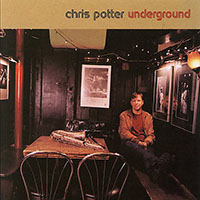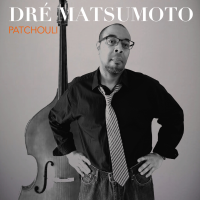Home » Jazz Articles » Profile » Yusef Lateef: Roots & Routes
Yusef Lateef: Roots & Routes
 Yusef Lateef is one of the first practitioners of "our music" to embrace "the other", those peoples and cultures far removed geographically and often ideologically from the sounds and sensibilities of North America. A renaissance man for the new millennium, Lateef is a philosopher, organologist, composer/arranger/performer, educator, author and acoustic Argonaut. He'll be in town in January for "Detroit: Motor City Jazz" at Jazz at Lincoln Center, a concert series featuring fellow Detroit alumni Charles McPherson, Ron Carter, Marcus Belgrave and Curtis Fuller. In a recent phone conversation, Lateef shared his thoughts about growing up in Detroit, music education, uses of language and ethnomusicology in Africa, among other things.
Yusef Lateef is one of the first practitioners of "our music" to embrace "the other", those peoples and cultures far removed geographically and often ideologically from the sounds and sensibilities of North America. A renaissance man for the new millennium, Lateef is a philosopher, organologist, composer/arranger/performer, educator, author and acoustic Argonaut. He'll be in town in January for "Detroit: Motor City Jazz" at Jazz at Lincoln Center, a concert series featuring fellow Detroit alumni Charles McPherson, Ron Carter, Marcus Belgrave and Curtis Fuller. In a recent phone conversation, Lateef shared his thoughts about growing up in Detroit, music education, uses of language and ethnomusicology in Africa, among other things.Lateef's autobiography The Gentle Giant, co-written with Herb Boyd, is due for release within the year and he is excited about his upcoming gig in Manhattan: "I feel honored by being asked to participate. They also engaged me to write some music for the concert, which I've done already. I'm looking forward to it and to playing with Curtis Fuller and Charles McPherson. I saw Charles last week in San Diego, but I haven't seen Curtis Fuller in years. It should be a thrill to play with him again and to play with the [Lincoln Center Jazz] orchestra, a very erudite orchestra."
A product of Detroit's fertile musical environment, Lateef attended Miller High School, where he hung out and jammed with Art Mardigan and Lucky Thompson. "I was there at the same time Milt Jackson was and Kenny Burrell followed after I graduated. There were two teachers, Mr. Goldenberg and John Cebera, and in fact I was there the day that Mr. Cebera suggested that Milt Jackson play the vibraphone. He suggested that I play the oboe, but I didn't take him up on it until years later. They were very serious and that was an influence on us to be serious about the music. Teachers are very important in fashioning their students, what they become. I've never forgotten them. Mr. Cebera's father, who was still in Spain at that time, was a musician and a composer and he used to send us compositions that we played with the high school band. That was one reason that we became very popular and played for many other high schools' affairs. At that time, in the '40s, to be playing this Spanish music—it was unprecedented." Another Detroit high school, Cass Technical, produced the likes of Geri Allen, Ron Carter, Donald Byrd, Regina Carter, Paul Chambers, Wardell Gray, Sir Roland Hanna, Doug Watkins and Gerald Wilson.
A long-time educator himself, Lateef has now retired from teaching African-American music and composition at the colleges of Hampshire, Amherst, Smith and the University of Massachusetts. "What I try to do with students is to help them find what they're looking for; once I find that out, then I try to start moving them in that direction. I recommend practice, education, performance, teaching and composing. And of course it's important to study other scientists, because they seem to overlap, in my thinking; like for example philosophy, when you look at the pre-Socratics, who taught that numbers are things. The Schillinger Method of Musical Composition did the very identical thing. So I encourage my students to have options or alternatives."
Similar to Duke Ellington, who disliked being pigeonholed as a 'jazz' musician and who referred to the music and musicians that inspired him as "beyond category", Lateef is careful with language. "I don't refer to my music as 'jazz', because of the ambiguity of the term; so I coined my own term for my music: it's autophysiopsychic music. The word is self-explanatory, if you look at it; it means music from the physical, the mental and spiritual self. That's the meaning I have for what I do. I taught a class at the Manhattan School of Music after I graduated [from] there; I was in the theory department and I had to write what my class was about and I coined the term at that time." Lateef is also wary of the word improvisation. "Improvised? That term is kind of strange also, because when you look up the definition it says, 'to do something without previous preparation.' Now, in essence, if that were true, you wouldn't have to practice; you wouldn't need preparation. You could take a carpenter and give him the saxophone and let him go play."
Lateef's interest in African music was in part stimulated by a four-year research fellowship at the University of Ahmadu Bello in Zaria, Nigeria from 1981 to 1984. "I was helping them document the music of the Fulani herdsmen, who are the cattle barons of Nigeria. They made a flute out of wood called a sarewa and it was my job to document this flute; they were manufactured right in front of my eyes. I also taught research methodology to Nigerian cultural students from different emirates and I had to interact with the dramatists and the musicians to produce convocation plays. We did a very significant take on a script that our director wrote called Queen Amina. In the drama we had to simulate the music of the various ethnic groups like the Nupe, the Hausa and the Mugazwa. Frequently I had to go out into the bush and hire musicians and sometimes pay them to record their music so we could stylize it for the drama. What I found so striking about the music of each group: it was entirely different; the rhythm and the melodies were different and each group distinctly knew their rhythms. For example, the Mugazwa were dancing to the court very vociferously whereas, diametrically opposed, the Nupe people danced as though they were in slow motion; the Igbo danced bent over, as though they were picking yams in the ground; and the Hausa danced upright, as though they were threshing wheat. It seems as though their occupation had an influence on their dancing. I found that interesting."
Another cross-cultural insight came when, during rehearsals for the Queen Amina production, Lateef discovered that the chorus was spontaneously reharmonizing his composition. "They taught us in the Germanic schools of music that minor keys denote sadness. So I orchestrated a minor chord for the chorus, like C, Eb, and G. And I noticed, each time in rehearsal, it would start out sometimes with the minor chord, but would revert into a quartal chord, like it'd be C, F, Bb. And so I just let it stay that way because, innately, it was a quartal sound that denoted sadness to them. So that was a learning thing for me. A quartal chord in America is some type of contemporary chord."
 His sojourn in Nigeria also stimulated Lateef's interest in making his own instruments. "I started making a lot of flutes of my own, because they made their own instruments. They didn't go to the store to buy an instrument, like a Selmer saxophone, etc.; they made their one-string fiddles out of goatskin and horsehair. And the structure of the instruments, like the xylophone, is different than the xylophone in North America. The lowest note the North American xylophone is on the far left, but you may find the lowest note right in the middle of the xylophone in Nigeria. They put spider fibers inside some of the flutes, at the aperture; it gives it a certain resonance. So the structuring of the instruments and the psychological effects of a certain sound were different."
His sojourn in Nigeria also stimulated Lateef's interest in making his own instruments. "I started making a lot of flutes of my own, because they made their own instruments. They didn't go to the store to buy an instrument, like a Selmer saxophone, etc.; they made their one-string fiddles out of goatskin and horsehair. And the structure of the instruments, like the xylophone, is different than the xylophone in North America. The lowest note the North American xylophone is on the far left, but you may find the lowest note right in the middle of the xylophone in Nigeria. They put spider fibers inside some of the flutes, at the aperture; it gives it a certain resonance. So the structuring of the instruments and the psychological effects of a certain sound were different."Inspired by the Nigerians' industriousness, Lateef has developed some unique ideas of his own. "I tried to acquire their understandings and feelings of structure and formation of music which has led me to things like what I call endophyte composition. It comes out of biology; it's something that lives inside something else. Well, I applied that endophyte condition to, say, a vertical chord, which is made up of certain intervals—it may have a minor second, a perfect fourth—and so I delegated each note of that chord to move horizontally in one of the intervals that are in the vertical sonority. Like if you have a quartal sonority, like C up to F#, an augmented fourth and then maybe above the F# is an A, a minor third. If I kept those notes as the verticality, then I would let each of those notes move. One would move an augmented fourth interval—for example, the F# would move to C—and the A would move down a minor third to F#. And then it would continue and I, by intuition, choose the rhythm that they move in. There's a definite order and you hear that order because it is ordered. [I got that] from wanting to find my way to do composition as they found their ways to play their music."
Yusef Lateef has traveled many roads since his formative years in Michigan, making fascinating discoveries along the way. He'll have colorful stories to share, musical and otherwise, when the gang from Detroit gathers this January.
Recommended Listening:
· Yusef Lateef - Morning: The Savoy Sessions (Savoy, 1957)
· Yusef Lateef - Cry!...Tender (New Jazz-OJC, 1959)
· Yusef Lateef - Eastern Sounds (Moodsville/Prestige-OJC, 1961)
· Yusef Lateef - Live at Pep's, Vol.1&2 (Impulse!-MCA, 1964)
· Yusef Lateef - The Blue Lateef (Atlantic, 1968)
· Yusef Lateef/Adam Rudolph/Go:Organic Orchestra - In The Garden (YAL-Meta, 2003)
Tags
PREVIOUS / NEXT
Support All About Jazz
 All About Jazz has been a pillar of jazz since 1995, championing it as an art form and, more importantly, supporting the musicians who make it. Our enduring commitment has made "AAJ" one of the most culturally important websites of its kind, read by hundreds of thousands of fans, musicians and industry figures every month.
All About Jazz has been a pillar of jazz since 1995, championing it as an art form and, more importantly, supporting the musicians who make it. Our enduring commitment has made "AAJ" one of the most culturally important websites of its kind, read by hundreds of thousands of fans, musicians and industry figures every month.


























